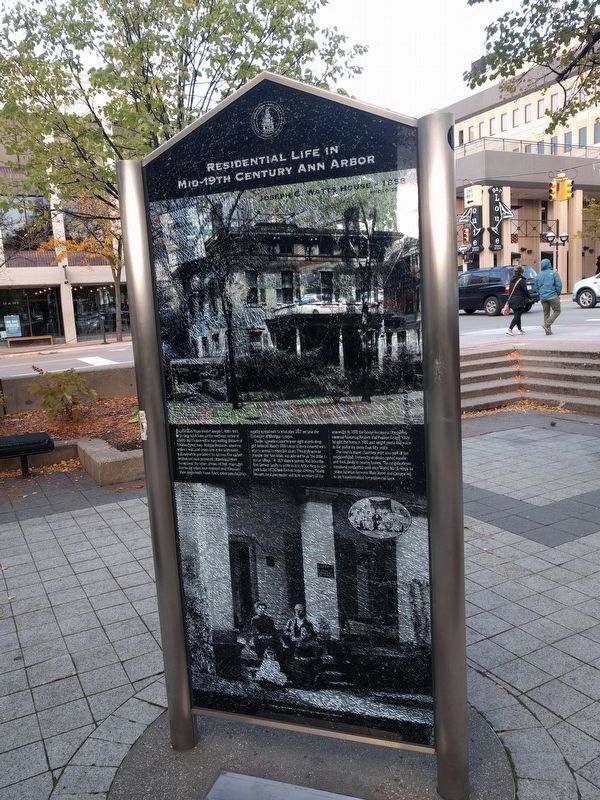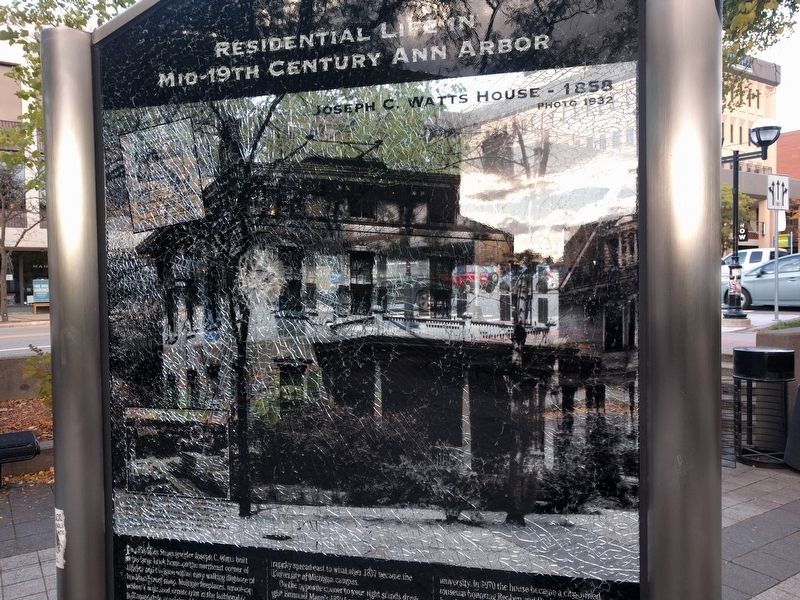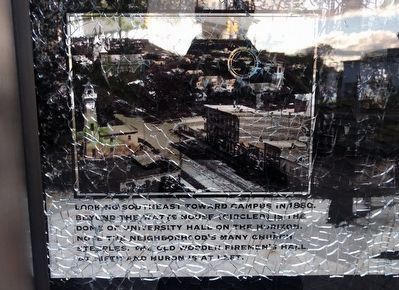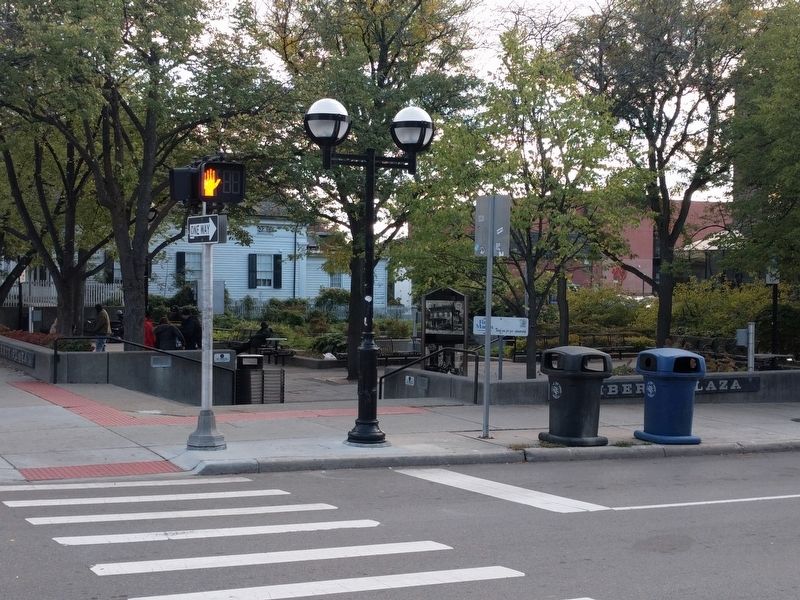Ann Arbor in Washtenaw County, Michigan — The American Midwest (Great Lakes)
Residential Life in Mid-19th Century Ann Arbor
Inscription.
In 1858 Main Street jeweler Joseph C. Watts built his large brick home on the northeast corner of Liberty and Division within easy walking distance of his Main Street shop. Multiple fireplaces, a roof-top widow's walk, and ornate trim in the fashionable Italianate style proclaimed his success. The earliest settlers and most prominent citizens built their houses near the center of town. At first, crude, dirt-floored log cabins were clustered near Huron and Main. Single-family frame, brick, and stucco dwellings rapidly spread east to what after 1837 became the University of Michigan campus.
On the opposite corner to your right stands druggist Emanuel Mannís 1850 house of brick covered with stucco scored to resemble stone.This style was so popular that Ann Arbor was referred to as “the little stucco village.” In 1829 Mannís parents had been the first German family to settle in Ann Arbor. Next to the park is the 1853 Greek Revival home of Henry Dewitt Bennett, local postmaster and later secretary of the university. In 1970 the house became a city-owned museum honoring Reuben and Pauline Kempf. They bought the home in 1890 and taught piano and voice in the parlor for more than fifty years.
The town's major churches were also part of the neighborhood. University students rented rooms and took meals in nearby homes. The neighborhood remained residential until after World War II, when its prime location between Main Street and campus led to its transformation to commercial uses.
Photos courtesy of the Bentley Historical Library
Topics. This historical marker is listed in these topic lists: Architecture • Education. A significant historical year for this entry is 1858.
Location. 42° 16.758′ N, 83° 44.658′ W. Marker is in Ann Arbor, Michigan, in Washtenaw County. Marker is at the intersection of South Division Street and East Liberty Street, on the left when traveling north on South Division Street. Marker is in Liberty Plaza. Touch for map. Marker is at or near this postal address: 310 South Division Street, Ann Arbor MI 48104, United States of America. Touch for directions.
Other nearby markers. At least 8 other markers are within walking distance of this marker. At Home in the 19th Century (within shouting distance of this marker); The 19th-Century Neighborhood (within shouting distance of this marker); Kempf House (within shouting distance of this marker); From Liveries to Taxis (about 600 feet away, measured in a direct line); Uptown Theaters (about 600 feet away); Michigan Theatre (about 700 feet away); Antislavery Society (about 700 feet away); Central Title Service Building (about 700 feet away). Touch for a list and map of all markers in Ann Arbor.
Also see . . . Site 1. Liberty and Division
. Marker on the Downtown Ann Arbor Historical Street Exhibit website. (Submitted on October 19, 2018, by Joel Seewald of Madison Heights, Michigan.)
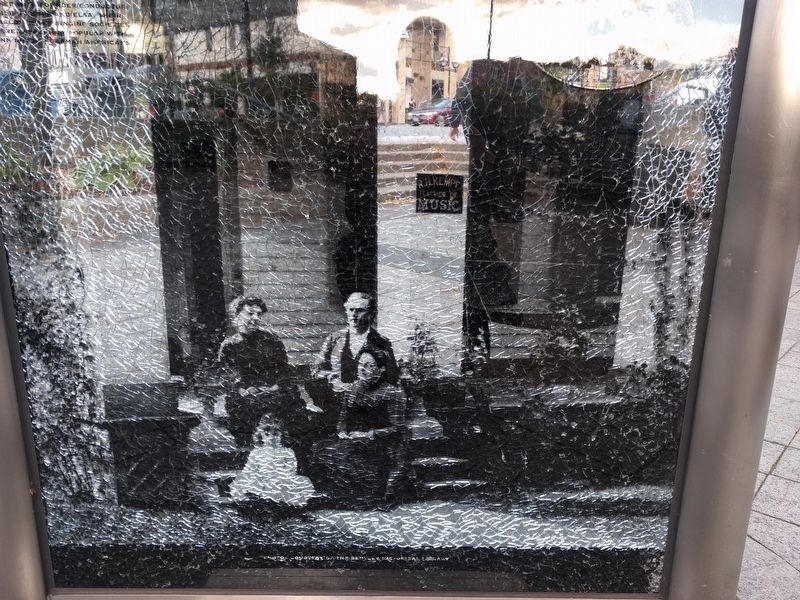
Photographed By Joel Seewald, October 17, 2018
4. Lower Image
Reuben and Pauline Kempf, on right, daughter Elsa, and a friend enjoy the Kempf front porch in 1890. The Lyra Gesang Verein (inset at right) posed with founder/conductor Reuben Kempf and Elsa, their mascot. Men's singing societies were especially popular with Ann Arbor's German Americans.
Credits. This page was last revised on May 28, 2019. It was originally submitted on October 19, 2018, by Joel Seewald of Madison Heights, Michigan. This page has been viewed 236 times since then and 14 times this year. Photos: 1, 2, 3, 4, 5. submitted on October 19, 2018, by Joel Seewald of Madison Heights, Michigan.
